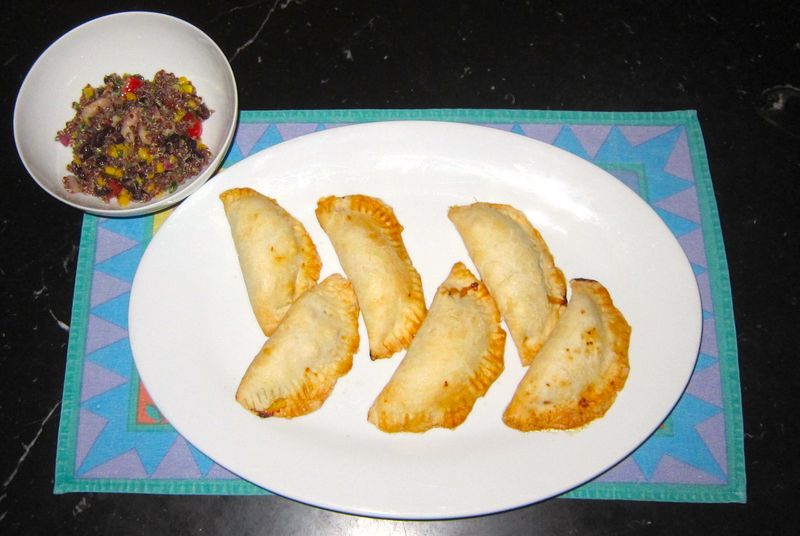Venezuelan cuisine reflects its indigenous roots as well as the influence of European settlers from Spain, Italy, France and Portugal. It has also incorporated elements from Incan and African traditional cooking.
Common staples include beef, chicken, corn and pork. Notable dishes are sanchodo de pescado (fish stew), cachito (ham stuffed bread rolls), muchacho (roast beef in sauce) and pabellón criollo (creole pavillion, Venezuela's national dish of rice, shredded beef and stewed black beans to which cheese and fried plantain can be added).
Did you know that Venezuela consumes more pasta (12.0 kg/person/yr) than any other country in the world except Italy (26.0kg/person/yr)? So, we could have just eaten pasta this evening. Instead, Josée chose the following dishes:
Empanadas Venezolanas
Ensalada de Quinua con Frejoles Negros y Choclo
Empanada is basically stuffed bread or pastry. The name derives from the Galician, Portuguese and Spanish verb empanar, meaning to wrap or coat in bread. The dough in Colombia and Venezuela is made out of cornmeal, yuca flour and wheat flour. In Ecuador you can find dough mixed with dried white corn, rice or green plantains. Empanadas are filled with cheese, ground beef or pork. Josée has made empanadas using dough made with wheat flour. The filling is pork, herbs, onions, tomatoes, red bell pepper, garlic, capers and currants.
Ensalada de Quinua con Frejoles Negros y Choclo or quinoa salad with black beans and corn is a common side dish throughout South America. Quinoa is an ancient native grain from the western slopes of the Andes. It was first domesticated in Chile and Peru. Quinoa was sacred to the Incas who revered it for its nutritional value. The decline of quinoa started in the 19th century. The Spaniards rejected the grain as Indian food. Quinoa is now being revived thanks to the growing interest in health and nutrition. It has an amazing nutrient profile characterized by an outstanding balance of protein, minerals and amino acids. There are about 2000 varieties of quinoa. It is now widely used not only in South America but in the US as well as it is now being cultivated.
¡Qué delicioso!
Joseph Froncioni










































































































kyle and I will be there for lunch once again!!!
Posted by: Alex Gibbons | November 02, 2012 at 08:34 AM